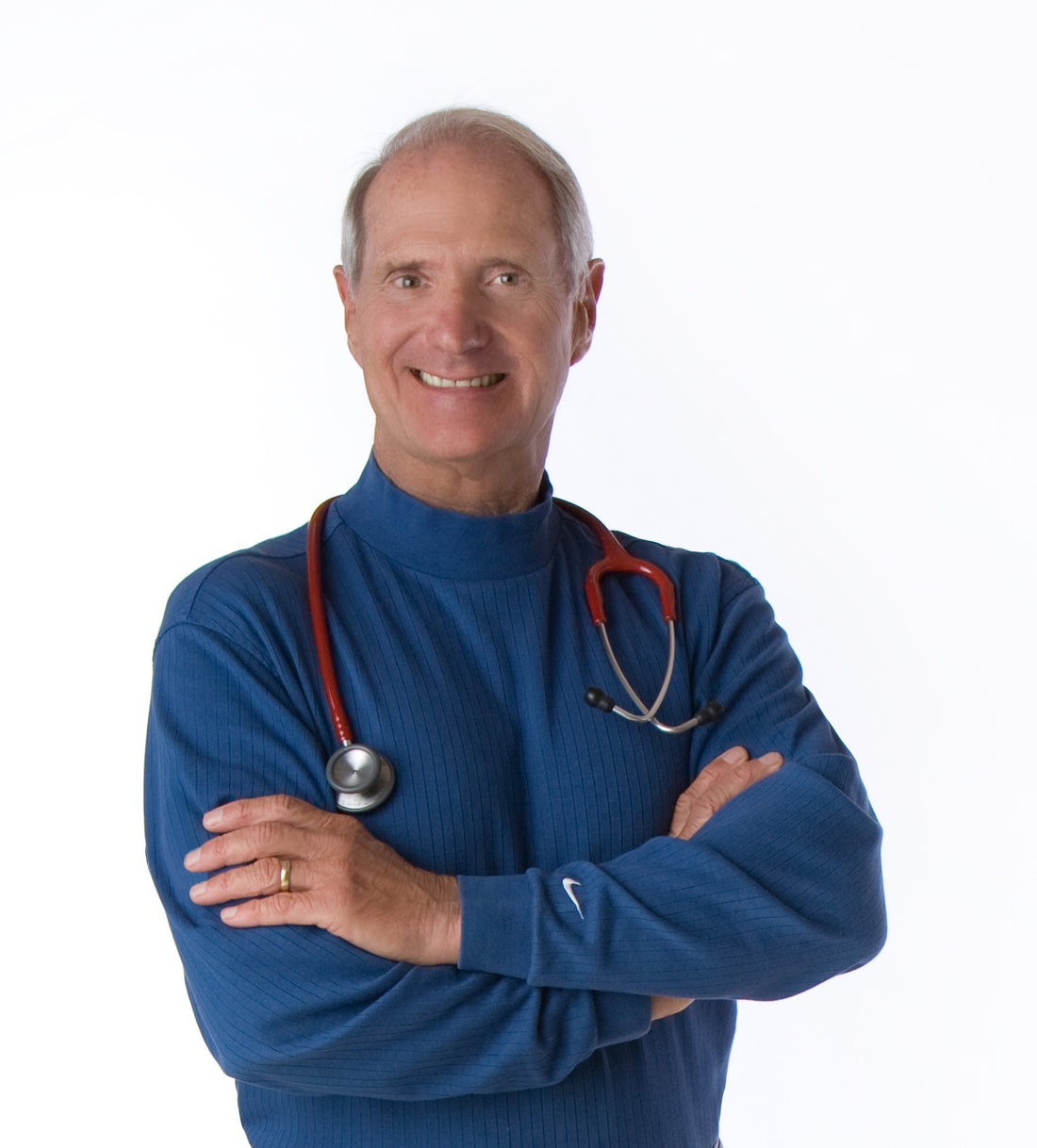March 2023
In our previous article (“Better Blood Vessels – Better Brain Health”) you learned how movement (aka “exercise”) helps open your body’s own internal medicine pharmacy and you are now more motivated to move. Yet, movement can be a strain on the joints and the muscles and tendons supporting them.
When I started my workout program years ago I realized that in order to enjoy more movement I had to also focus on keeping my joints healthy. Many of my patients in my medical practice suffered from various “-itis” illnesses in their joints which kept them from enjoying more movement, and moving less kept them from enjoying the full health effects of opening their own internal pharmacy. This led me to the importance of not letting my body get into this painful cycle by keeping my joints free of inflammation – wear and tear.
Lessons from athletes. While writing my book, The Inflammation Solution, I realized that those who know the most about keeping their joints free of inflammation would be professional and amateur athletes. During a trip to Hawaii I talked to some marathon runners who told me that to lessen their joint soreness they took a natural supplement called astaxanthin that supported a healthy inflammatory response after exercise.* Astaxanthin comes from a microalgae grown in ponds on the Big Island of Hawaii.
Over my many decades in medical practice I’ve learned to trust supplements grown in nature much more than those formulated in the biochemistry lab. That’s the principle that drew me to study how astaxanthin supports the health of joints and tendons.
Show me the science. Researchers studied twenty people who experienced wrist pain after overuse in the workplace and found that those who ate four milligrams of Natural Astaxanthin, three times a day, had less pain in the joints they used most in their workplace. This is especially important since so many people spend their days typing on computers and then suffering pain in the joints of their hands and wrists. I was also fascinated by a study of tennis players who experienced less arm soreness after taking astaxanthin.
In addition, there is research on weightlifters – top candidates for joint, muscle, and tendon soreness. In a study conducted at the Human Performance Laboratories of the University of Memphis, the weightlifters who took astaxanthin experienced less muscle soreness.*
ENJOY DR. BILL’S FAVORITE JOINT-HEALTH TIPS – WITH ADVICE FROM YOUR HEALTHCARE PROVIDER
- Move your joints. Joints are made to move. Inside your joints you have a natural healing medicine called synovial fluid. Movement mobilizes this repair nutrient, especially in your knee joints, by causing the natural sponge-like cushions to draw nourishment from the underlying bones every time the knee joint is compressed and released during walking. When you move any joint imagine you are pumping “oil” that lubricates your joints.
- Swim till your joints’ content. One day in my office a patient asked me, “Dr. Bill, my knees hurt so much. What can I do to help my knees feel better?” On my prescription pad, to her surprise, I scribbled: “swim!” Swimming is joint-friendly. There’s no pounding or twisting. Walk in water, march in water by lifting your legs higher and swim. Call it “flotation therapy” for your joints.
- Be nice to your knees. One of the most important joints to keep healthy so that you can enjoy more health-promoting effects of movement is your knee joints, especially while walking and running. Here is my program for being nice to your knees:
- Keep your knee-supporting muscles strong by doing more exercises for your quads and hamstrings. Stronger quads and hamstrings take some of the load off the knee joints while walking and running.
- Lighten the load on your knees. Stay lean. An extra pound of excess weight, especially belly fat, increases the pressure on your knees three-fold.
- Cushion your heels. Especially if you’re a heel-pounder, enjoy heel cushions. And, adjust your walking to a less heel-pounding gait to ease the wear-and-tear on your knees.
- Be mindful of walking downhill. Downhill walking produces the most wear-and-tear and uneven pressure on your knees. If you must walk downhill, walk in a zigzag down the hill rather than in a straight line.
- Move your knees. Movement mobilizes your natural lubricant in your knee joints, synovial fluid, which acts like a shock absorber in addition to lubricating the knee joints, especially when you exercise them. To mobilize your natural knee-nourishing fluids, try knee-pumping while sitting or standing.
Try these tips to enjoy good joint health and keep moving!
Stay-tuned for my next article: “How to Support a Healthy Immune System.”
*These Statements have not been evaluated by the Food and Drug Administration. This product is not intended to diagnose, treat, cure, or prevent any disease.
Consult your healthcare provider before starting a new diet, exercise, or health program.
References:
The Inflammation Solution by William Sears, M.D.
Natural Astaxanthin, Hawaii’s Supernutrient, by William Sears, M.D., 2015.
Nir, Y. and Spiller, G. (2002). BioAstin, A Natural Astaxanthin from Micro-Algae, Helps Relieve Pain and Improves Performance in Patients with Carpal Tunnel Syndrome (CTS), Study Report, Los Altos, CA: Health Research and Studies Center.
Spiller, G. (2006). “Effects of daily use of Natural Astaxanthin on C-reactive protein,” Health Research and Studies Center, Los Altos, CA.
Fry, A. (2001). Astaxanthin Clinical Trial for Delayed onset Muscular Soreness: Report I, Memphis, Tenn: University of Memphis, Exercise Biochemistry Laboratory.

